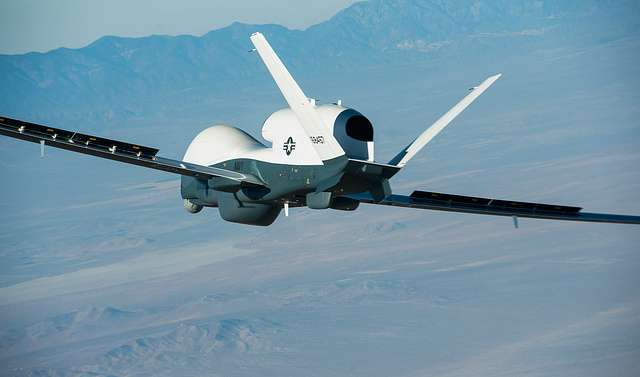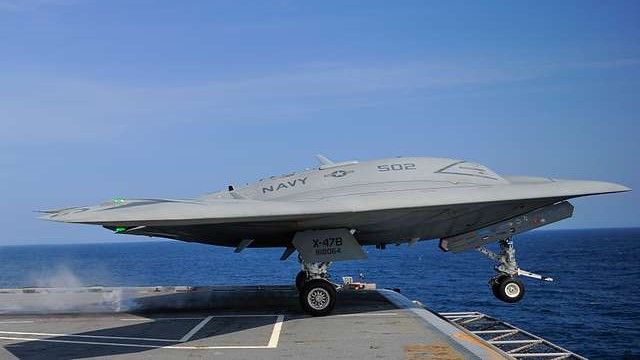Car Construction Model Inspires Drone Design
Is ‘platform sharing’ the best way to advance low-cost, high quantity military drone production?

Military drones are in extremely high demand. The war in Ukraine alone is consuming tens of thousands of drones every month. Meanwhile, global militaries are increasing their defence budgets and forces are adapting their military hardware needs to include uncrewed vehicles.
For Western powers, meeting production demand for drones carries an even greater challenge as their geo-political rival, China, dominates the drone manufacturing sector, controlling 70% of the global drone market.
“China benefits from a manufacturing ecosystem that goes back many decades,” explains Adam Bry, co-founder and CEO of Skydio, a U.S. drone maker. “They’ve been building consumer electronics for many decades. Our cost structure is quite a bit higher than our peers coming from China.”
If the US and other NATO members are hoping to field drone swarms then both the cost and speed of manufacturing uncrewed aerial vehicles (UAVs) must be drastically improved.

To do this, arms manufacturers are looking to the automobile sector at how to build more for less, by designing drones which share more common parts with other drone types.
It is a concept known by automakers as ‘platform sharing’ - whereby they mass-produce a common basic chassis and then create a variety of different vehicle models which all use the same platform. Because there are fewer variations across models, automakers can improve a vehicle's reliability, save time, save money, and make maintaining a supply chain of parts much, much easier.
“What if we built airplanes the same way the automotive industry built cars?” asks Doug Meador, the head of autonomous collaborative platform capabilities at AFRL’s Aerospace Systems Directorate. “What if we came up with a common chassis, or a framework around which you can put disparate performing types of aircraft, and what would that do [for] both being able to build the aircraft quickly and build them cheaper?”

For this reason, the US Air Force is currently deploying a class of UAVs known as Collaborative Combat Aircraft. These drones will be able to fly on their own and may even function as ‘wingmen’ for fighter aircraft like the F-35 and the Next Generation Air Dominance platform. The Air Force wants these CCAs to be able to perform a variety of tasks from electronic warfare and reconnaissance, to ground support and strike missions. However, it wants to avoid designing and building multiple types of drone for each task. It is therefore making a uniform core which can then be adapted for each different purpose.
It is hoped that this will enable the Air Force to field large numbers of UAVs relatively inexpensively - a concept officials refer to as ‘affordable mass.’
With this in mind, drone developers in the US military have been working hard on creating the XQ-67A, as its size and performance may make it suitable for this concept.
“It’s an alternative [development option] that, to date, we have not had,” Meador confirmed recently. “We’ve essentially validated it by flying the XQ-67.”
“The XQ-67A is designed to carry sensors and have the potential to fly autonomously — though it now can only be flown remotely — alongside a crewed fighter to provide intelligence, surveillance and reconnaissance,” notes the industry journal C4ISRnet. “Its first flight occurred and was a relatively short, easygoing test. [However] More ambitious flight tests are planned in the near future to fully understand whether the XQ-67 can do what it was designed for.”
“We still need to characterize some of the flying qualities and things like that, so we can turn it from a flight test program to a possible experimentation asset,” explained Meador.

The XQ-67A came into being from a project known as Low-Cost Attritable Aircraft Technologies, a concept which by nature focused on low-cost and fast production. This in turn influenced the Air Force's common platform strategy.
Following cooperation with multiple arms manufacturers on the LCAAT initiative to figure out how to make a low-cost drone that could perform various missions, Kratos Defense and Security Solutions developed the XQ-58A Valkyrie.
This proved it was possible to build a drone that can fly for long ranges, at high sub-sonic speeds, and with sufficient payloads for just a few million dollars. Now drone designers are beginning to see if this underlying platform is suitable for being shared with other drones conducting different missions.

If the common body proves practical, then it could be used for generations of future UAVs, as a good core design could be maintained while future sensors and weapons systems could be added as they are invented. The common core system would also aid weapons development, as each weapons designer would be working in the knowledge of where their systems will need to fit.
“It’ll keep the cost down,” notes Meador, “because we’re not going back and, from the ground up, redesigning everything from scratch.”
Fielding a drone swarm on a tight budget was never going to be easy, and if the West is to compete with the Chinese manufacturing giant then it needs to grow quickly. However, with the right designs, the right investment, and with a little inspiration from the automobile construction sector, it might just be possible.
Photo credit: Picryl, Flickr, Picryl, Jenkirbyhistory, & Jenkirbyhistory

